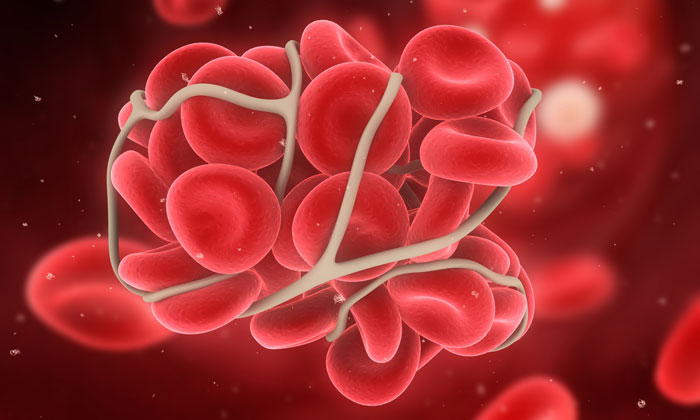Assay of clotting ability accurately predicts need for transfusion in trauma patients
Posted: 16 May 2017 | Sarah Wills (Drug Target Review) | No comments yet
A new test of blood clot strength has the potential to identify patients who are most in need of a substantial blood transfusion.


The new test, based upon thrombelastography (TEG®), used in combination with a conventional laboratory measurement of blood clotting time (known as the International Normalized Ratio or INR) has the capacity to quickly and efficiently assess the overall ability of blood to clot, as seen by researchers at the University of Colorado’s Department of Surgery, Denver.
The investigators believe that in the not too distant future these tests, when used in combination with the standard test, will be able to personalise trauma care, help surgeons save lives, and make better use of scarce blood bank resources.
More than 80% of deaths in the operating room and 50% of deaths in the first 24 hours after injury are due to massive blood loss and impaired coagulation. While only 3% of civilian trauma patients receive a substantial transfusion in the first day of treatment after trauma, these patients account for 70% of all blood transfused in a trauma centre.1
Biomarkers aren’t just supporting drug discovery – they’re driving it
FREE market report
From smarter trials to faster insights, this report unpacks the science, strategy and real-world impact behind the next generation of precision therapies.
What you’ll unlock:
- How biomarkers are guiding dose selection and early efficacy decisions in complex trials
- Why multi-omics, liquid biopsy and digital tools are redefining the discovery process
- What makes lab data regulatory-ready and why alignment matters from day one
Explore how biomarkers are shaping early drug development
Access the full report – it’s free!
“When someone is massively bleeding, you need to give certain blood products early, and the blood bank has to mobilise blood products that are resource scarce, such as platelets, which have only a five-day shelf life. You want to quickly identify patients who will require a large quantity of blood products to save lives and mobilise the blood bank only when you need it,” according to lead study author, Hunter B. Moore, MD.
However, clinical scoring systems for predicting the need for massive transfusion are problematic. Some rely on vital signs, such as blood pressure and heart rate, which are subjective and highly variable; others require multiple diagnostic imaging and laboratory tests.2
This new test, developed by Dr Moore and his colleagues, modifies a currently available test of blood clot strength, thrombelastography (TEG®), by adding tissue plasminogen activator (tPA) to a patient’s blood sample. Thrombelastography is a point-of-care assay of coagulation that measures the viscoelastic properties of whole blood and determines the ability of blood to clot. Tissue plasminogen activator is a protein involved in the breakdown of blood clots.
“When patients go into hemorrhagic shock, they activate the blood’s fibrinolysis or clot degradation system at the local or organ level so organs continue to be perfused with blood. At the systemic level, there are backup inhibitors – platelets and proteins – that prevent clot degradation from affecting the whole body. Activators of fibrinolysis include tissue plasminogen activator. As patients progress toward haemorrhagic shock, clot degradation intensifies, and their tPA levels increase. We can unmask this process in the early stages by giving extra tPA to blood samples and forecast if the patient is at high risk of progression to hyperfibrinolysis,” Dr Moore said.
Dr. Moore and associates studied more than 300 patients who were treated for trauma between 2014 and 2016. Seventeen percent of the patients required a massive transfusion, and one third of deaths were due to uncontrolled haemorrhage. The investigators assessed how effectively each clinical score could determine the need for massive transfusion, and compared their effectiveness to their new developed test.
The analysis showed that this tPA-challenged TEG assay was highly sensitive and specific and took only a few minutes to provide results – up to 30 minutes faster than existing tests. Moreover, when the tPA-challenged TEG assay was used in combination with the INR, it improved the predictive value of identifying patients who needed transfusion by roughly 40%. Additionally, the two-test combination identified 97% of patients who did not require blood products, thereby preventing unnecessary transfusions.
The researchers therefore propose that trauma teams use the INR as a screening test to determine if someone is at risk for bleeding and then follow up with tPA-challenged TEG to ensure that this result is accurate.
The tPA-challenged TEG assays currently require trained technicians to conduct the testing. However, newly available fully automated TEG instruments will streamline this process, according to Dr Moore.
“The fully automated assays will have a standardised methodology for obtaining samples and may be used as a point-of-care test by prehospital providers to screen for the risk of massive transfusion before patients enter the trauma centre. These assays will help us move one step closer to the time when the trauma team can tailor or personalise resuscitation to each patient,” Dr Moore said.
References
1 American College of Surgeons Trauma Quality Improvement Program: ACS TQIP Massive Transfusion in Trauma Guidelines. Available at https://www.facs.org/~/media/files/quality%20programs/trauma/tqip/massive%20transfusion%20in%20trauma%20guildelines.ashx. Accessed May 11, 2017.
2 Brockamp T et al. Predicting on-goin hemorrhage and transfusion requirement after severe trauma: a validation of six scoring systems and algorithm on the TraumaRegister DGU. Critical Care. 2012; 16(4):R129.
Related topics
Analysis, Assays, Research & Development
Related conditions
haemorrhage
Related organisations
University of Colorado
Related people
Dr Hunter Moore








